The 50s style – From Glamorous A-lines to Timeless Sheath Styles


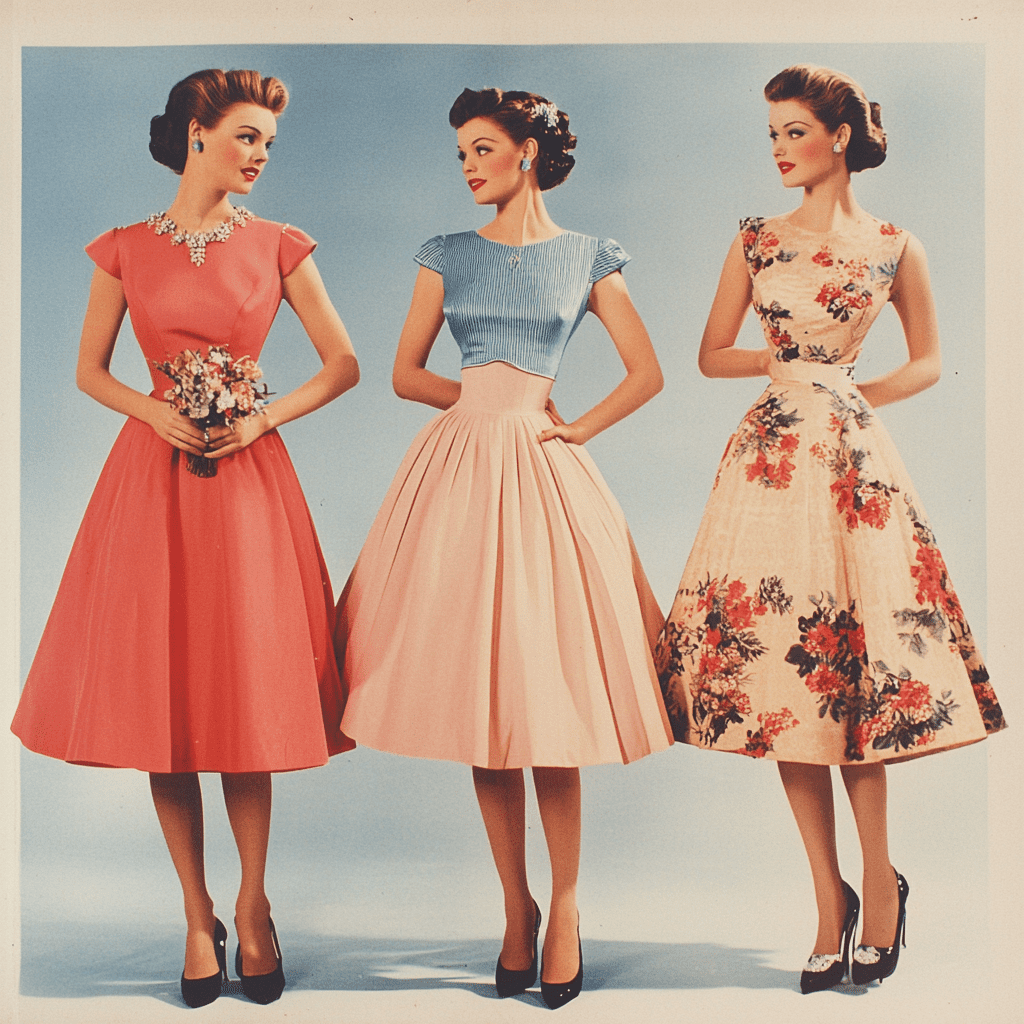
The 1950s were a transformative decade in fashion, with dresses defining the iconic feminine silhouette that continues to inspire fashion today. The post-war era brought a return to glamor and celebration of the female form. Women embraced fuller skirts, cinched waists, and elegant tailoring that emphasized hourglass figures. Here’s a breakdown of how 1950s dresses evolved from the start to the end of the decade, how celebrities defined their own styles, and how dresses were accessorized in the ’50s.
1. Early 1950s: The New Look Revolution
The early 1950s were heavily influenced by Christian Dior’s “New Look”, introduced in 1947. Dior’s designs marked a stark departure from the more practical and utilitarian styles of the 1940s wartime era. His “New Look” had three main features:
- Nipped-in waists that highlighted the hourglass figure.
- Full skirts that flared out from the waist, often supported by petticoats to create volume.
- Soft shoulders and fitted bodices that enhanced femininity.
Key Dress Styles:
- Fit-and-flare dresses: Dresses that were fitted at the waist and flared at the skirt, reaching mid-calf length. They were often worn with voluminous petticoats for extra fullness.
- Tea-length dresses: These dresses, falling between the knee and the ankle, became a popular choice for evening events and tea parties.
- Shirtwaist dresses: Casual yet chic, these dresses featured buttoned tops resembling men’s shirts but with fitted waists and full skirts, combining structure with femininity.
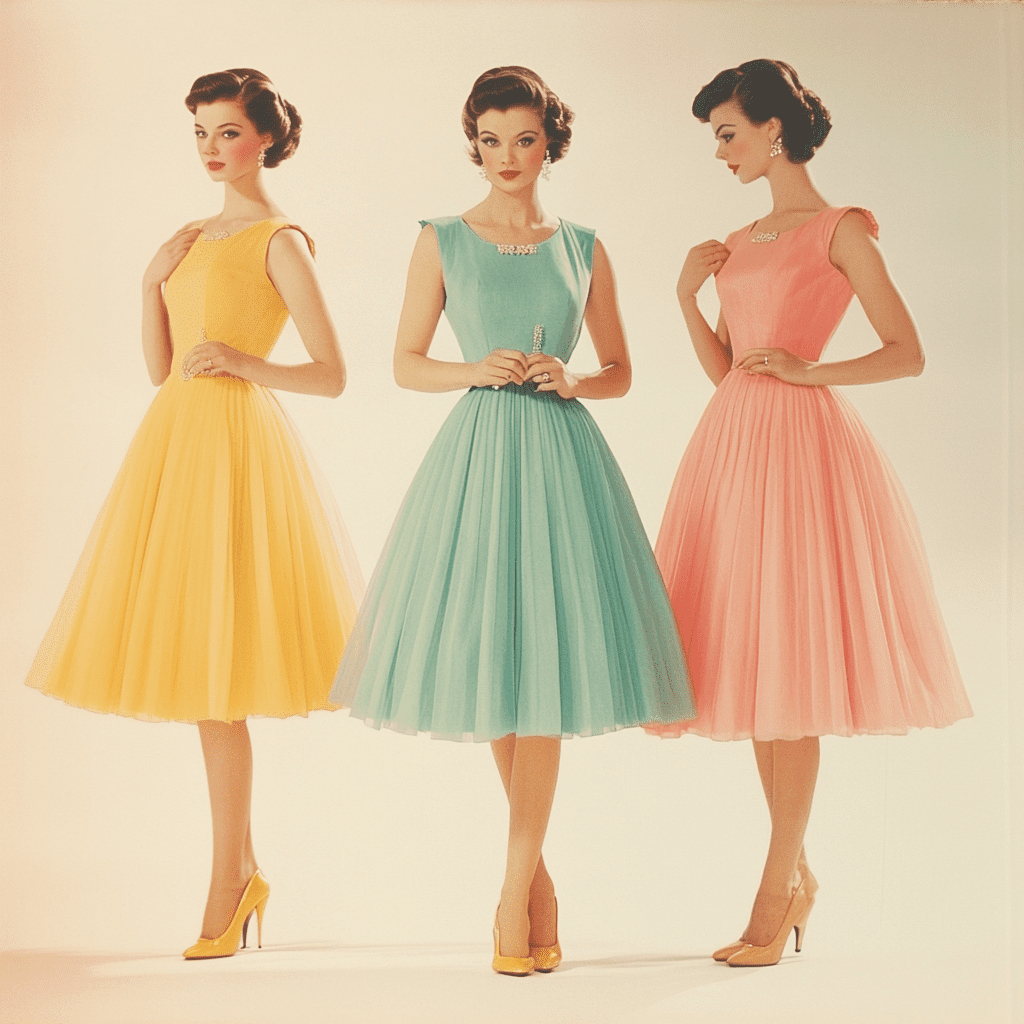
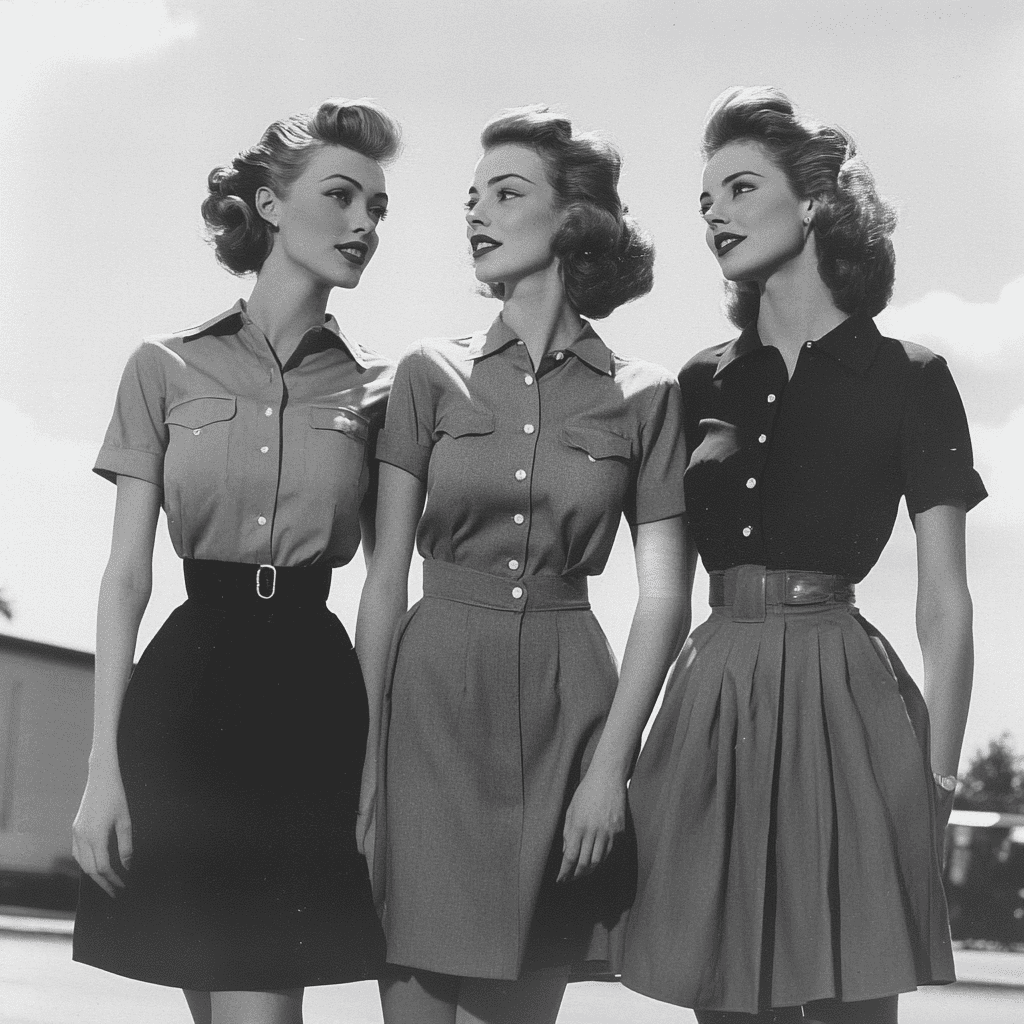
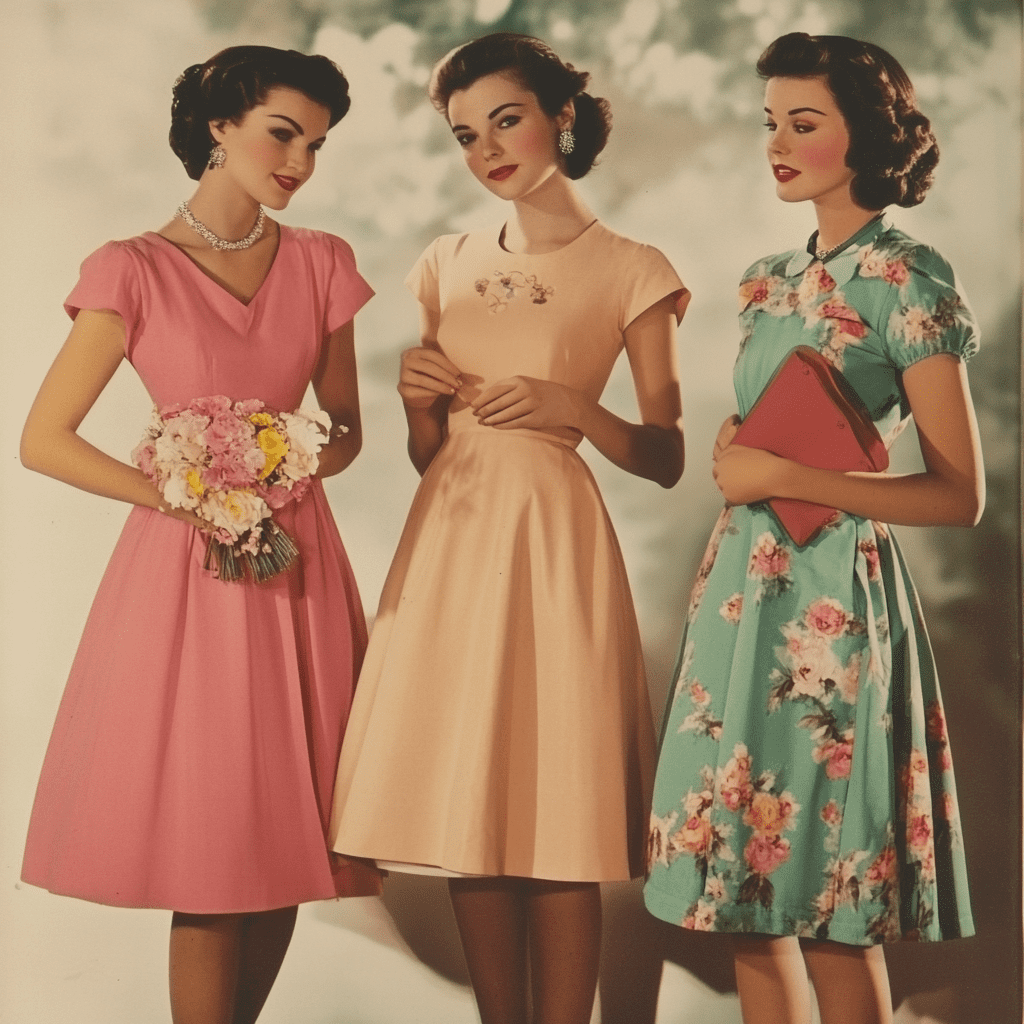
Fun Fact: The early 1950s’ focus on full skirts was practical as well as fashionable. Women used layers of tulle petticoats to achieve the desired volume. Some even used horsehair petticoats for extra stiffness!
Celebrity Influence:
- Grace Kelly embodied elegance and sophistication with her sleek, full-skirted gowns and fitted bodices.
- Marilyn Monroe often wore figure-hugging, sexy designs, particularly in her films, which pushed boundaries for women’s fashion.
- Christian Dior’s “New Look” became a worldwide sensation, and actresses like Rita Hayworth and Vivien Leigh popularized this silhouette.
- Sophia Loren in Italy brought sultry Mediterranean flair, embracing fitted dresses that highlighted her curves.

Machiko Kyō, a Japanese actress, gained international fame, contributing to global fashion trends with her elegant, traditional-meets-modern wardrobe choices.
2. Mid-1950s: Growing Variety and Influence of Mass Media
As the 1950s progressed, television and Hollywood films became more accessible, introducing women to a wider array of dress styles and celebrity trends. The hourglass shape remained popular, but more diverse cuts and patterns were introduced.
Key Dress Styles:
- Sheath Dresses: For a more fitted, sultry look, sheath dresses became increasingly popular, especially for evening wear. These dresses had straight lines, hugging the body’s curves without the flare of the early 1950s.
- Sun Dresses: Casual fashion also evolved with cotton sundresses. These dresses often had halter necklines or spaghetti straps and were perfect for casual daytime outings.
- Pencil Skirt Dresses: These dresses featured narrow skirts that emphasized the hips and legs, showing off more of a woman’s natural figure.
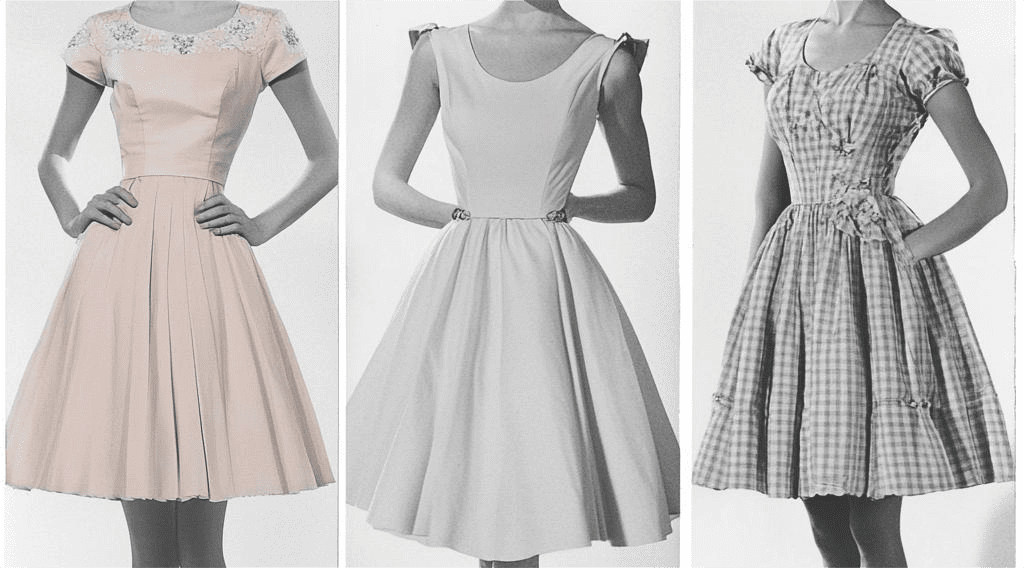
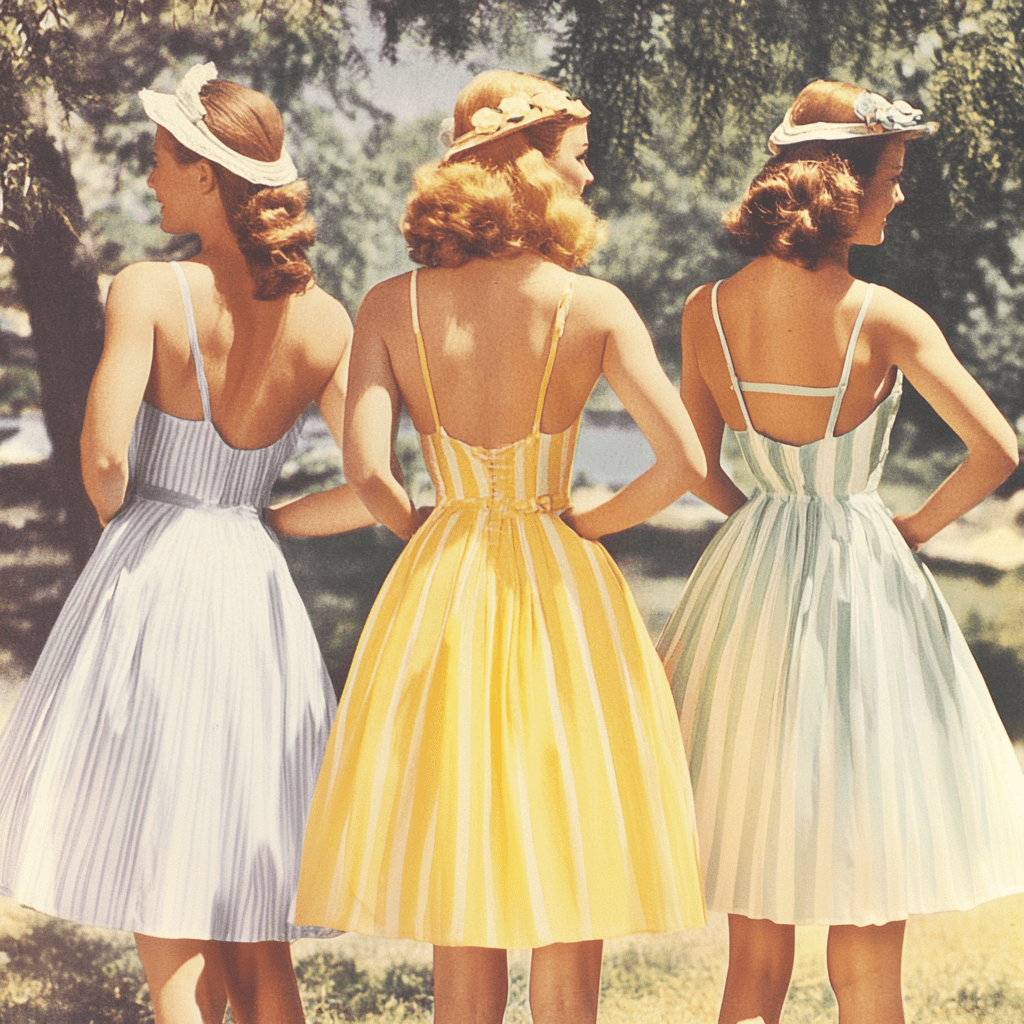
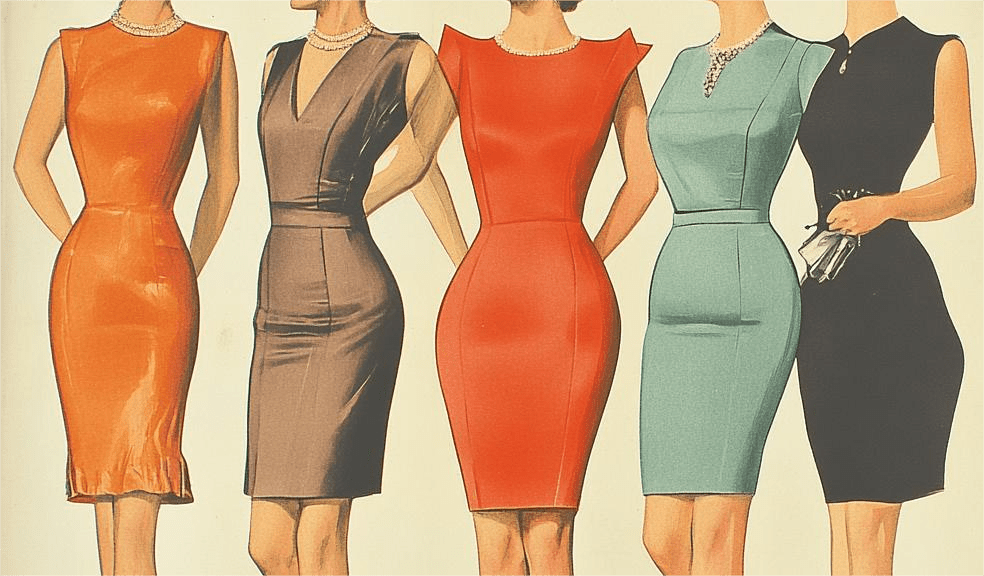
Fun Fact: The 1950s saw the rise of sleeveless dresses in casual wear, particularly during summer, offering a refreshing change from the structured, heavier dresses of earlier decades.
Celebrity Influence:

Audrey Hepburn: Her iconic sheath 1950s dress in Breakfast at Tiffany’s (1961) influenced 1950s fashion, symbolizing chic elegance that defined the era.
Elizabeth Taylor: Known for her glamorous 1950s dresses with bold necklines, reflecting a luxurious, daring style of the mid-1950s.
Jayne Mansfield: This Hollywood star popularized the sultry fitted 1950s dress, highlighting her bombshell figure in sheath designs.
Lauren Bacall: Often seen in sleek, tailored 1950s dresses, exuding confidence and sophistication.
Joan Crawford: Regularly wore structured 1950s dresses, both on and off screen, showcasing the allure of tailored sheath silhouettes.
Deborah Kerr: Famous for her understated elegance, Deborah favored fitted 1950s dresses, embodying grace and refinement.
Cyd Charisse: Her athletic figure was often flattered by form-fitting sheath 1950s dresses, bringing femininity to the era’s fashion.
Gene Tierney: Known for her timeless beauty, Gene Tierney often wore sheath 1950s dresses that enhanced her elegant persona.
3. Late 1950s: Streamlined Silhouettes and the Transition to the 1960s
By the late 1950s, dress styles began to shift toward a slightly more modern look, with a focus on cleaner, streamlined designs that would foreshadow the shift toward the 1960s. The skirts remained full, but the waistlines began to soften, and A-line silhouettes emerged as an alternative to heavily structured designs.
Key Dress Styles:
- A-line Dresses: The A-line dress flared out slightly from the shoulders or waist but without the extreme volume of earlier full skirts.
- Cocoon Dresses: With less emphasis on the waist, the cocoon dress had a rounded, relaxed shape that was easy to wear and perfect for evening wear.
- Swing Dresses: These knee-length dresses, often sleeveless, were playful and free, reflecting a more relaxed, informal style as the decade came to an end.
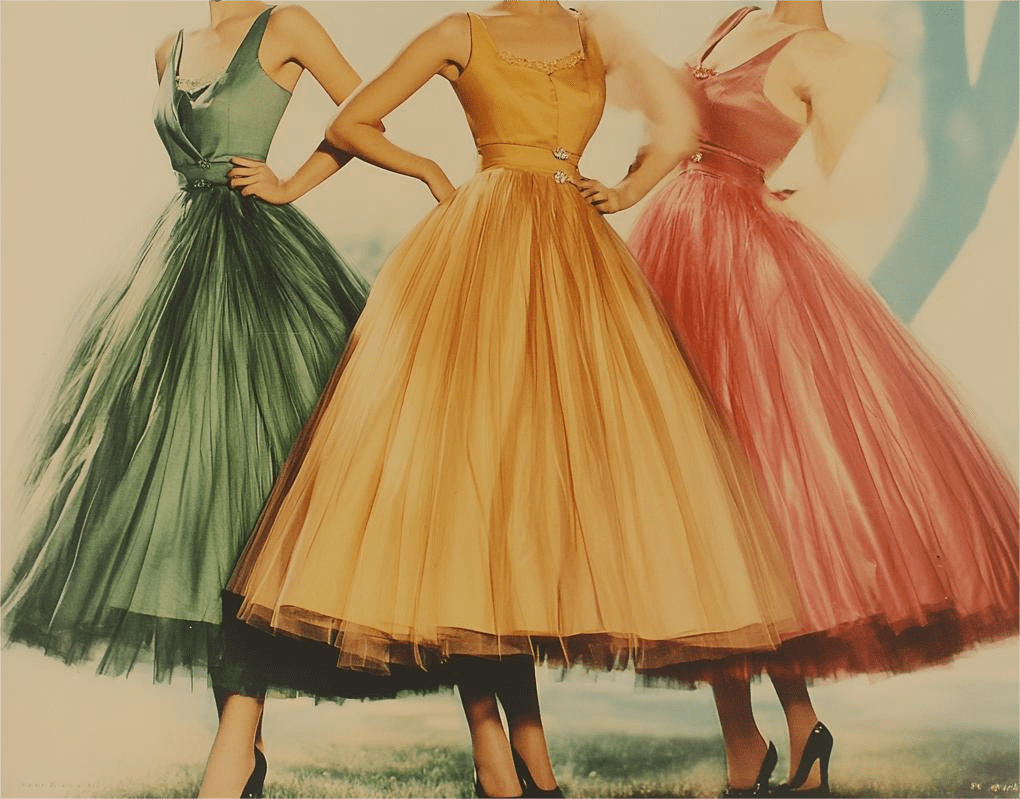
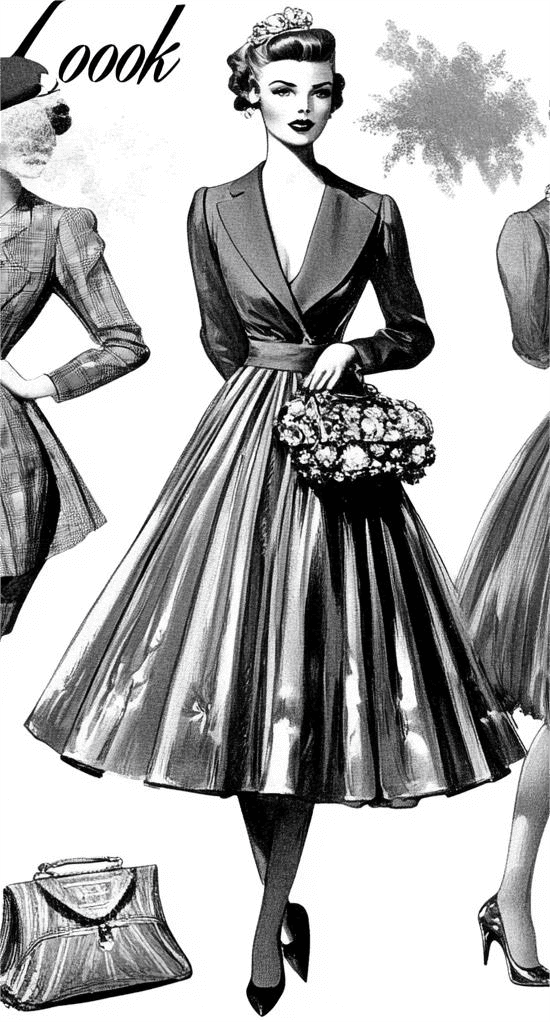
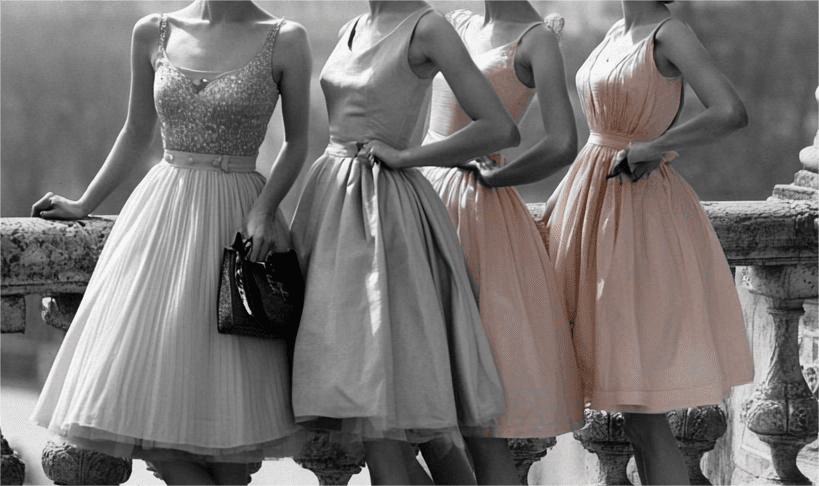
Fun Fact: By the late 1950s, fabric options expanded, and women could experiment with lace, chiffon, silk, and satin for evening dresses, while cotton remained popular for day dresses.
Celebrity Influence:
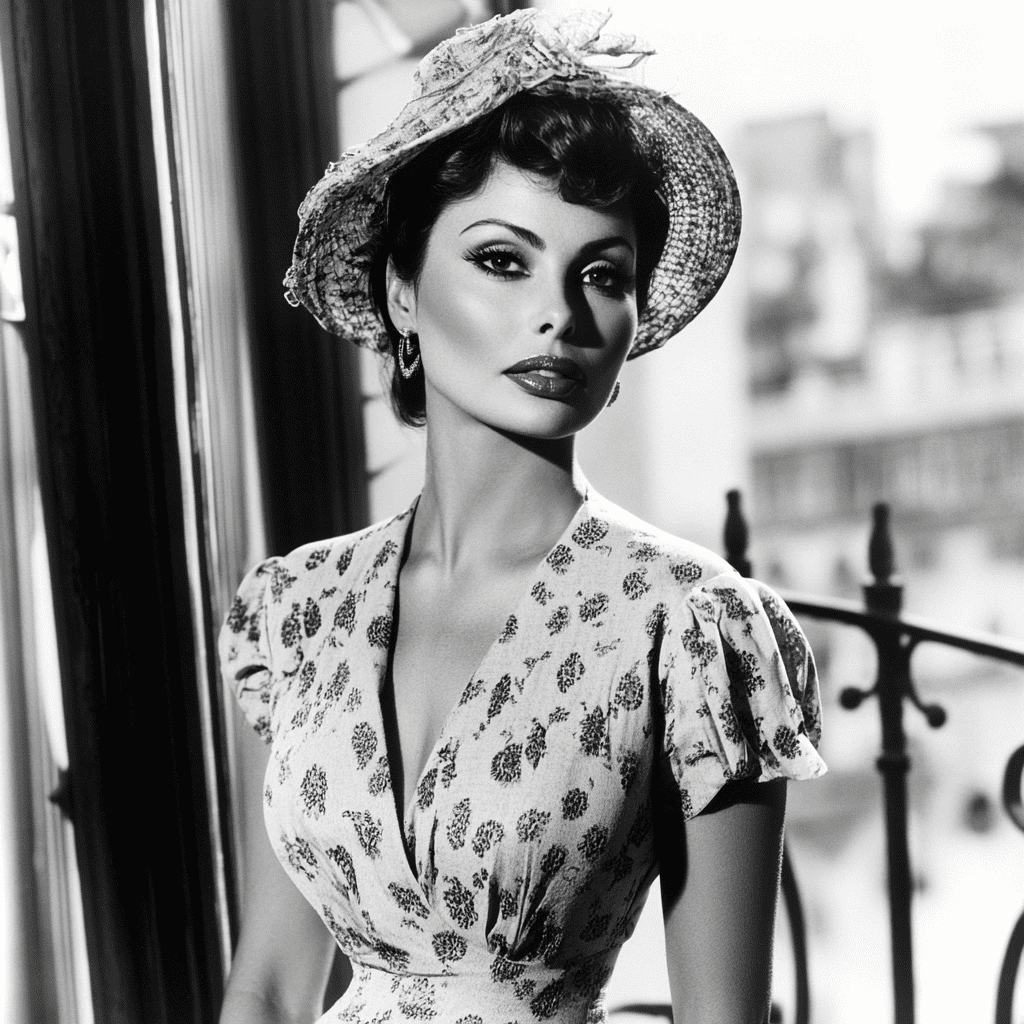
Sophia Loren and Brigitte Bardot began to influence fashion with their sultry, confident styles. Bardot’s off-shoulder “Bardot neckline” became synonymous with late-1950s allure.
- Doris Day represented the cheerful, girl-next-door look, often seen in brightly colored swing dresses or crisp shirtwaist dresses.
- Jackie Kennedy: A style icon, Jackie Kennedy popularized the A-line dress in the 1950s with her polished and understated fashion choices.
- Barbara Stanwyck: As a Hollywood legend, she embraced the more understated A-line and cocoon dresses, emphasizing classic lines.
- Lucille Ball: As the star of I Love Lucy, she sported A-line dresses and swing dresses, emphasizing fun, playful styles that were perfect for the 1950s housewife look.
- Ava Gardner: The actress’s glamorous style often featured cocoon dresses, giving her an effortlessly chic look for evening events.
4. What Defined a Typical 1950s Dress?
The 1950s were characterized by a wide range of dress styles that often had common elements:
- Cinched waists: Whether worn with belts or fitted bodices, 1950s dresses always highlighted the waist.
- Full skirts: Dresses with voluminous skirts were a hallmark of the 1950s, especially for formal occasions. These could be calf-length (tea dresses) or knee-length (day dresses).
- Modesty in Necklines: While some dresses featured plunging necklines, day dresses generally had higher, more modest necklines like the bateau or sweetheart.
- Bright patterns and colors: Polka dots, gingham checks, floral patterns, and stripes were all popular, reflecting the optimistic mood of the post-war era.
Fun Fact: Poodle skirts, featuring whimsical appliqués like dogs, cats, or flowers, were popular among teens in the ’50s and represented a fun, youthful look.
5. How Were Dresses Accessorized in the 1950s?
Accessories played a huge role in completing the 1950s look, and no dress was truly complete without the right touches.
Key Accessories:
- Petticoats: Full skirts required crinoline or net petticoats to hold their shape.
- Gloves: Women often wore gloves to formal events. Long gloves were worn with evening gowns, while shorter gloves were paired with day dresses.
- Pearl Necklaces: Nothing said “1950s elegance” quite like a strand of pearls, which added a timeless and classic touch to any outfit.
- Hats: Small, ladylike hats—pillbox hats, berets, and fascinators—were often worn with dresses. For more casual occasions, wide-brimmed hats and straw hats were popular.
- Shoes: Kitten heels, peep-toe pumps, and slingbacks were the go-to shoes, often matched with handbags. Casual outfits might feature ballerina flats.
- Handbags: Women carried small handbags or clutches to match their dresses. These were often boxy and structured, in keeping with the tailored, polished aesthetic of the decade.
- Belts: Cinching the waist was key to defining the 1950s silhouette, and women often wore wide, decorative belts over their dresses.
- Brooches and Pins: Dresses were often adorned with brooches, which became a statement accessory.
Fun Fact: Scarves were another versatile accessory. Women would tie a silk scarf around their necks, wear it as a headband, or even drape it over their shoulders for an added touch of glamor.
6. Fun Facts about 1950s Dresses
- Bullet Bras and Petticoats: The exaggerated hourglass shape was enhanced by bullet bras, which created the iconic pointed bust line, and full petticoats, which made skirts flare out dramatically.
- Poodle Skirts for Teens: The famous poodle skirt is perhaps one of the most iconic fun trends of the ’50s. It originated as a homemade fashion item for teenagers, featuring appliquéd poodles (and other motifs) on felt skirts. It became the ultimate youth symbol of 1950s fashion, perfect for dances and soda shop dates.
- Dresses for Every Occasion: Women in the 1950s often had a dress for every occasion—whether it was a morning dress for housework, a casual day dress for shopping, a tea dress for afternoons, or a cocktail dress for the evening.
Conclusion: 1950s Fashion and its Lasting Impact
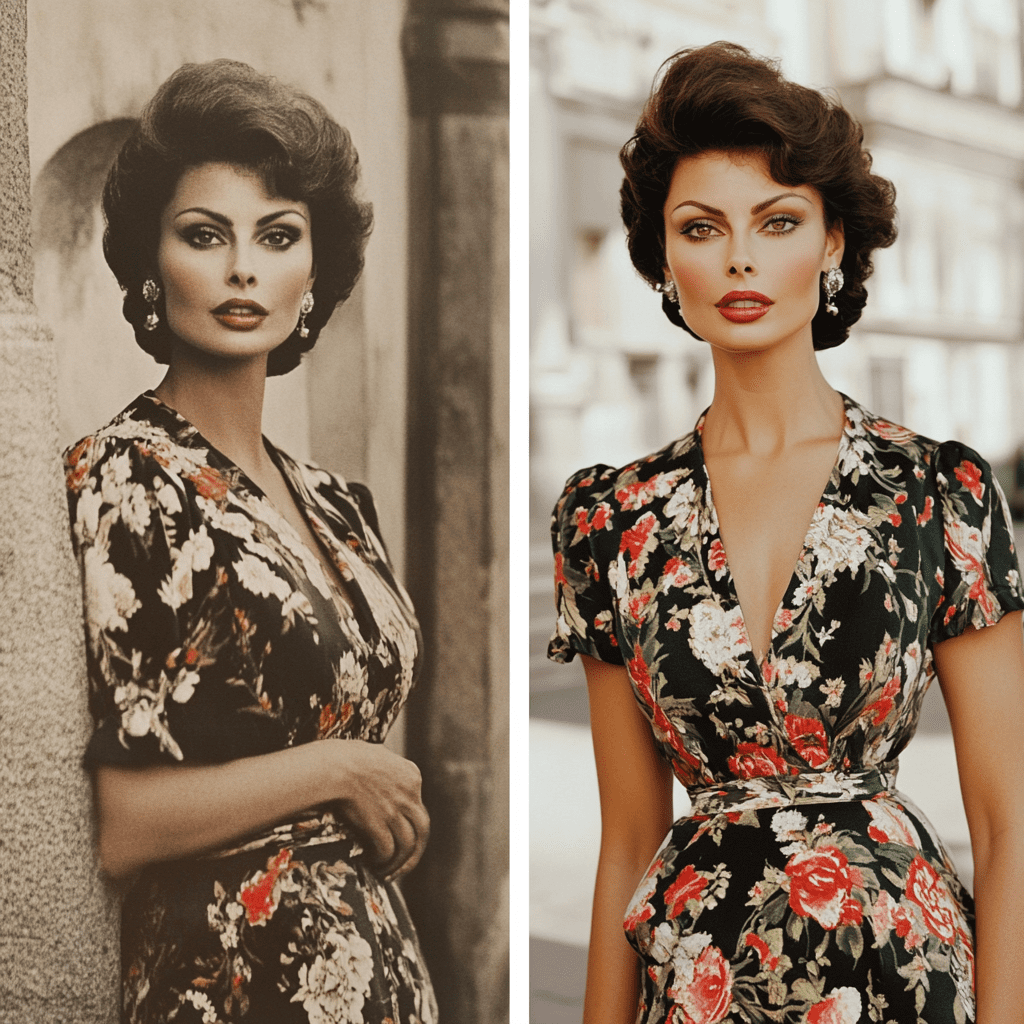
The 1950s dress style remains one of the most enduring and iconic representations of femininity and elegance in fashion history. From the early 1950s’ structured, full skirts to the streamlined silhouettes of the late decade, 1950s dresses celebrated the hourglass figure while offering variety for every occasion. The use of bold patterns, rich fabrics, and unique accessories, combined with the influence of Hollywood stars like Grace Kelly, Marilyn Monroe, and Audrey Hepburn, made 1950s fashion a timeless reference that continues to inspire contemporary designers.
Today, vintage enthusiasts and fashion houses alike still draw inspiration from the polished, glamorous look of 1950s dresses, proving that the ’50s style is truly one for the ages.

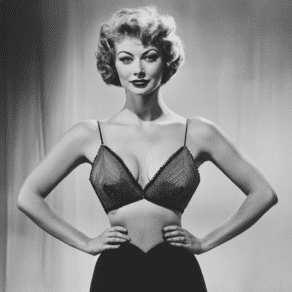

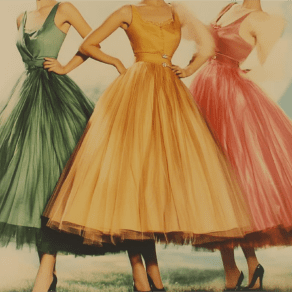


Leave a Comment